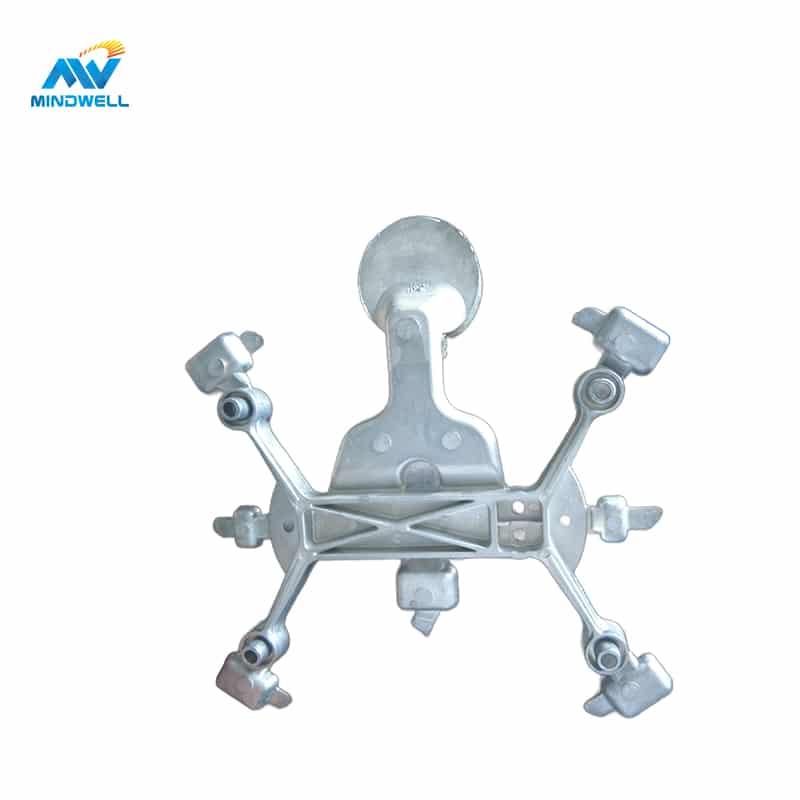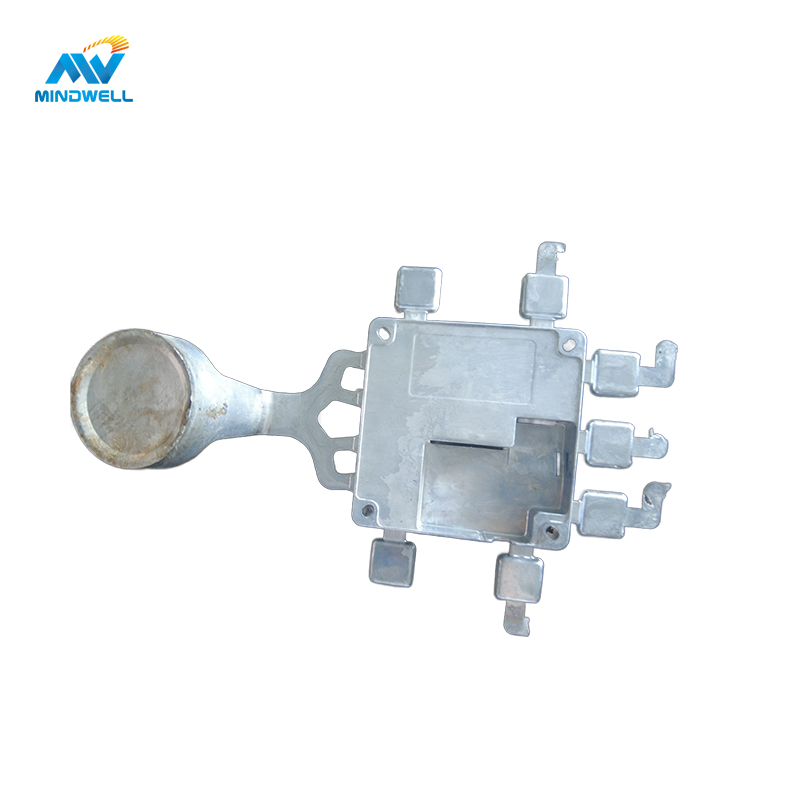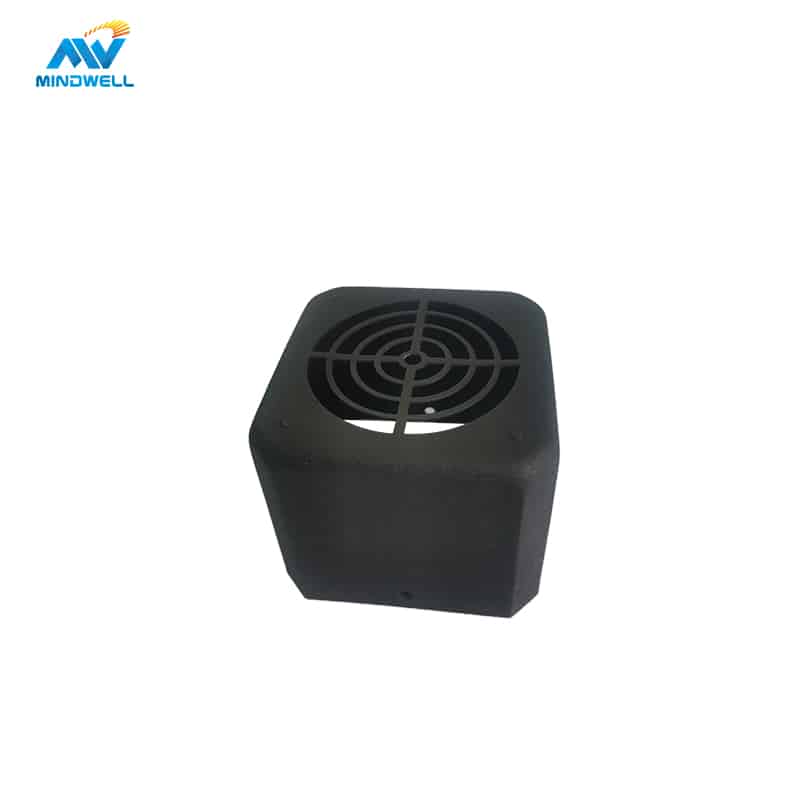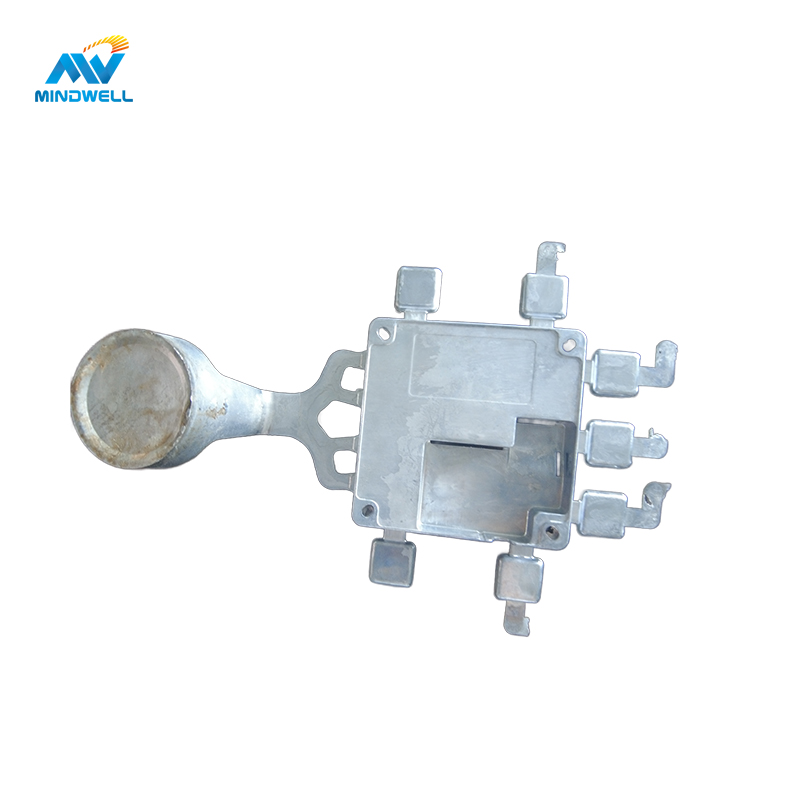Sand casting and die casting are two common casting methods that each have advantages and disadvantages and are suitable for different products and applications. The characteristics and differences of these two casting methods are described in detail below. Let’s first understand the sand casting:
sand casting
Sand casting is a traditional casting method in which castings are made by filling a mold with a wet sand gooey mixture. First, the foundry needs to make a mold, knead wet sand into the shape of the model, and reserve casting ports and vent holes for it. The molten metal is then poured into the sprue and allowed to flow into the mold to fill the space. The molten metal cools and solidifies in the sand to form a casting. The advantage of this method is that the manufacturing cost is low, and it can produce large quantities of parts, especially for the production of large parts. However, this method requires high mold making precision and strict control over materials and processes during the manufacturing process. At the same time, the quality of castings produced by sand casting is often rough and prone to porosity or flaws.

Sand casting steps
Step 1: Determine Part Shape and Size
Before sand casting, it is necessary to plan and design the required parts first, and determine their shape and size.
Step 2: Making the core mold and mold
The mandrel is the product of the internal shape of the part, usually made of wax, mud, wood, gypsum and other materials. A mold is a finished product of the external shape of a part, usually made using a sand mold. When making sand molds, put sand on the model, and the shape of the part in the mold can be presented. By fitting the two parts of the mold together, the molten iron is poured into the center. When the molten iron is solidified, the mold is disassembled, and the parts required for production are cleaned out, and these parts are revealed in their embryonic form.
Step 3: Preparing the Iron
Molten iron needs to go through ironmaking, and put the required metal materials into the furnace to melt. The temperature of the molten metal is as high as several thousand degrees, and then poured into the sand mold. Loose, convenient for later machining.
Step Four: Pouring
The molten iron is poured into the sand mold at a high temperature, and the hot air sprayed from the sand mold lubricates the solidification surface of the casting, making the surface of the casting harden quickly, and the inside of the casting undergoes a period of chaos and differentiation, and finally solidifies and forms.
Step 5: Clean Up and Process
After the castings are taken out, they need to be cleaned and processed. Cleaning includes grinding, ductile iron, shoveling, etc., while machining is usually the machining that needs to be done in order to bring the accuracy of the part to the desired standard.
The advantages of sand casting
The manufacturing cost is low, large parts can be manufactured, the production cycle is short, the surface roughness of castings is small, etc. However, the product density of sand casting is high, the mechanical properties are relatively weak, and it is difficult to achieve high precision casting.
Sand casting is a relatively common process for making metal parts, whether it is in heavy industry or in the manufacture of small parts. Metal parts of various shapes can be manufactured by sand casting, the advantage of which is that the production cycle is short and some relatively simple parts can be mass-produced. Therefore, the technology of sand casting is being widely used and paid attention to day by day.
In contrast, die casting is a process in which liquid metal is injected into an already formed mold under high pressure. Its main features are: fast manufacturing speed, high surface smoothness and high density of die castings, and good economic benefits can be achieved in large-scale production occasions. Let’s understand die casting again:
Die-casting
Die casting is a more precision casting method that can create high precision parts. It uses a press that sprays molten metal into a mold, which is then squeezed through pressure and allowed to solidify in the mould. Because the mold has high precision and stability, it can produce parts with high precision and no secondary processing. The method can also create thin-walled parts, making it suitable for parts in automotive, electronics, aerospace and military, among other fields. However, due to the high cost of mold making and equipment, this method is suitable for the production of small batches of parts. Die casting also requires tight control of materials and processes to ensure product quality.

Die casting steps
- Design the mold: First, a mold needs to be designed and manufactured to inject the molten metal or alloy into the specific shape of the mold. Molds usually consist of two parts, one for the injection port and filling system, and one for the shape of the finished part. Efficient mold design is the key to efficient production.
- Prepare raw materials: Before die-casting, you need to prepare suitable metal or alloy materials. These materials require a process of smelting and refining in blast furnaces to increase their purity and composition.
- Melting the metal: After the metal or alloy is prepared, it needs to be melted through the process of high temperature melting. In the process of melting, some suitable additives can be added to adjust the composition of the material and improve its performance.
- Injection into the mold: When the metal or alloy is molten, the injection system injects it into the mold. The injected metal or alloy cools rapidly and solidifies, gradually beginning to take the desired shape.
- Ventilation and exhaust: After the metal or alloy is injected into the mold, the gas in it needs to be discharged to ensure the integrity of the casting. Generally, the gas generation can be reduced by adjusting the injection time and injection speed, so as to improve the quality of the casting.
- Pressure relief: Finally, the casting needs to be removed from the mold and the part is surface treated and machined to achieve the desired shape and precision.
Advantages of Die Casting
High density, high strength, relatively high cost performance, thin wall can be manufactured, and high dimensional accuracy. At the same time, die-casting castings generally have a very good surface quality, and can even achieve a smoothness comparable to plastic injection molding.
Sand Casting VS Die Casting
The two metal casting technologies, sand casting and die casting, complement each other and each has its own advantages. Sand casting is widely used, especially in the field of high-value large-scale castings; while die-casting plays an irreplaceable role in the production of high-precision, large-scale small castings. Therefore, in practical applications, it is necessary to select the appropriate casting process according to the specific needs, so as to achieve better production efficiency and quality requirements.
In conclusion, sand casting and die casting are both effective casting methods that can meet different manufacturing needs. Sand casting is suitable for high-volume castings, and the cost is lower, but it requires control of materials and processes. Die casting is suitable for parts with high precision and thin walls, and is suitable for small batch production, but requires high precision molds and strict material and process control. According to actual needs, manufacturers can choose different casting methods to meet their product performance requirements and production costs.






